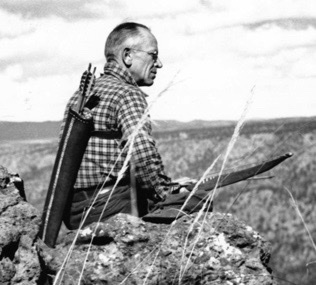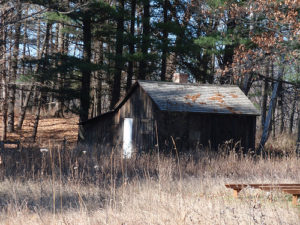Rand Aldo Leopold was born on January 11, 1887. Before the end of his much-too-short life (he died at 61, in 1948), he would write the book, A Sand County Almanac, that has become the philosophical bible for conservationists.

Leopold was a child of the field and forest. He and his brother accompanied their father into the woods as often as possible, first to observe nature and later to hunt its products for the table. But he was equally at home in the library or music room, learning the ways of books and ideas from his mother. The combination served him well as he grew to be known as the father of wildlife management.
He trained as a forester and took his first professional job with the U.S. Forest Service in New Mexico. He led timber surveying crews, measuring the forest for its production of wood. He loved the grandeur of the environment, as well as the grandeur of the task—toting up billions of board-feet of lumber available for utilization. Like all foresters in the early decades of the 20th Century, he believed that forests were for logging—a utilitarian approach to nature.
But when a serious illness required that he give up the physically challenging job of a field forester, his outlook began to expand and mature. With a supervisory job in the Forest Service’s regional office in Albuquerque, he had the opportunity to visit many national forests and see the damage that uncontrolled grazing and logging inflicted on the environment. Soils eroded, productivity declined, wildlife disappeared. What was needed was a new profession, one that combined the laws of nature with the needs of people.
He eventually took a promotion to the Forest Service’s Forest Products Laboratory in Madison, Wisconsin. The job didn’t suit him, however, and after a few years, at the brink of the Great Depression, he resigned from the government to do something else. But what to do? He had lots of ideas, but no one to pay him for them.
After a period of unemployment, he secured a temporary job. He was hired by a sporting organization to survey the status of wildlife populations around the country, report on the conditions and make recommendations for improvement. Within a short time, the task was narrowed to a survey of just the Midwestern states. In two years, he visited hundreds of field locations and talked to even more landowners, hunters and government officials. His final report, published in 1931, became the first comprehensive assessment of the deplorable state of wildlife populations in the United States. It established Leopold as the “father of wildlife management.”
Now, Leopold knew where his future lay. He was immediately hired by the University of Wisconsin as the nation’s first professor of wildlife—a position he held until his death. He trained hundreds of students, oversaw the restoration of thousands of acres of degraded farm and forestland, and wrote the first wildlife textbook.
Along the way, he bought a little farm outside of Madison. The farm had been badly abused, but together with his wife and daughters, Leopold restored it. They converted the only building on the farm, an old chicken barn, into a barely habitable cabin. That cabin gradually acquired the name of “The Shack,” and is now a rough-hewn mecca for conservationists the world around.

As Leopold restored the land, he wrote essays about the experience, chronicling the events on a month-by-month basis. He also wrote essays about his earlier years in the West and an evolving perspective on how to manage the earth sustainably. After years of writing and rewriting and rejections by publishers, he finally secured a contract for the publication of A Sand County Almanac.
Regrettably, he did not live to see the book printed. While helping fight a grass fire at a neighboring farm in 1948, he suffered a fatal heart attack at the age of 61.
But his family carried through on the editing process, and A Sand County Almanac was published posthumously the next year. Although it wasn’t a popular book at the time, its re-issue as a paperback in 1970 made it the popular treatise we know today. Without doubt, A Sand County Almanac is the most widely read environmental narrative of all time.
References:
Nielsen, Larry A. 2017. Nature’s Allies. Island Press, Washington DC.
